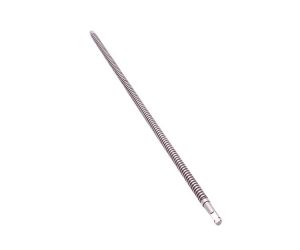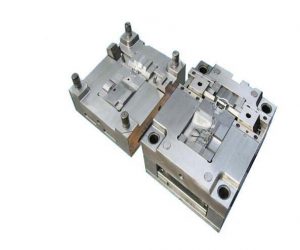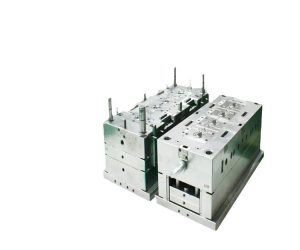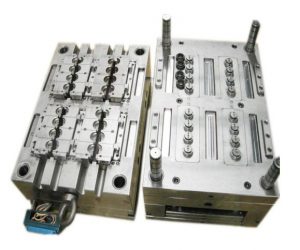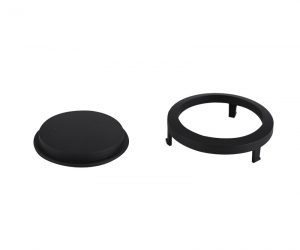Plastic injection molding is a widely used process for manufacturing large quantities of plastic products. This process involves injecting molten plastic into the mold cavity under high pressure, and then cooling and solidifying it into the desired product shape. This technology has its advantages and disadvantages, and manufacturers should carefully consider it before making a choice.
Firstly, one advantage of plastic injection molding is its high repeatability. Due to the precise design and manufacturing of the mold cavity, the products produced each time are almost identical. This allows manufacturers to produce on a large scale and ensure the stability of product quality.
Secondly, this process has a faster production speed. Compared with traditional manual manufacturing methods, plastic injection molding can produce a large number of products in a short period of time. This helps to improve production efficiency, shorten delivery time, and meet the rapidly changing market demand.
In addition, plastic injection molding also has cost advantages. Because molds can be reused, manufacturers only need to pay for mold development once, without the need to make separate molds for each product. At the same time, this process can also achieve automated production, reducing manual operations and labor costs.
However, plastic injection molding also has some drawbacks. Firstly, the design and manufacturing of molds require high technology and experience. If the mold design is unreasonable or the manufacturing is inaccurate, it may lead to product defects or quality issues. Therefore, manufacturers need to invest certain resources to ensure the quality and reliability of the molds.
Secondly, this process requires high standards for the selection and control of raw materials. Different types of plastic materials have different properties and processing characteristics, and choosing the appropriate material is crucial for product quality. In addition, manufacturers need to strictly control the quality and proportion of raw materials to ensure product consistency and stability.
Finally, plastic injection molding may have some impact on the environment. Due to the high temperature and chemical treatment involved in this process, pollutants such as exhaust gas, wastewater, and waste may be generated. Therefore, manufacturers need to take corresponding environmental measures, such as recycling waste, purifying exhaust gas and wastewater, etc., to reduce the negative impact on the environment.
Overall, plastic injection molding is a widely used process for manufacturing large quantities of plastic products. Its advantages include high repeatability, fast production, and low cost. However, there are also some challenges and limitations in this process, such as the complexity of mold design and manufacturing, the selection and control requirements of raw materials, and the impact on the environment. Therefore, manufacturers should consider these factors when choosing this technology and make wise decisions based on their own needs and resources.
advantage:
- High efficiency: Injection molding has high production efficiency and fast cycle time, which can produce a large number of identical parts in a very short time. The automation process reduces labor costs and errors, making it an economically efficient way of mass production.
- Accuracy and precision: Injection molding can create complex shapes with high tolerance levels, ensuring accurate and precise dimensions. It also provides consistent quality throughout the entire production process while minimizing defects.
- Design flexibility: Injection molding provides designers with excellent design flexibility, allowing them to create complex and uniform parts without sacrificing production process quality and consistency.
- Material diversity: Plastic injection molding can process various materials, from thermoplastic to elastomer, enabling the production of products with different mechanical, thermal, and chemical properties.
Disadvantages:
- High tool costs: The cost of creating injection molds is high, and the complexity of design and materials plays a key role in the total cost. This factor makes injection molding unaffordable for low volume production.
- Longer delivery time: The time required for designing, modeling, and creating injection molds is relatively long, and the entire process may take several weeks to several months. Therefore, this manufacturing process is not suitable for products that require short delivery times or deadlines.
- Environmental issues: Injection molding generates a large amount of plastic waste, which is a significant environmental problem. Abandoned plastics may lead to pollution, and this process itself also generates greenhouse gas emissions, which can exacerbate climate change.
- Part design limitations: Part designs that require tight tolerances, sharp corners, or varying wall thicknesses may not be suitable for injection molding. This process may introduce defects such as warping, shrinkage, or sinking marks, resulting in a decrease in the functionality or quality of the parts.
Summary: Plastic injection molding has many advantages and disadvantages in the production of plastic products. Its high efficiency, precision and accuracy, design flexibility, and material diversity make it a feasible process for large-scale production. However, high tool costs, long delivery times, environmental issues, and part design limitations pose significant challenges to this process. Manufacturing companies should consider these factors before choosing plastic injection molding as their preferred manufacturing process.
Plastic injection molding is a widely used manufacturing process that has both advantages and disadvantages. Its efficiency, accuracy, precision, design flexibility, and material diversity make it suitable for large-scale production. However, high mold costs, long delivery times, environmental issues, and limitations in part design pose significant challenges to this process. Potential manufacturing companies should carefully weigh these factors before choosing this technology. Designs that require tight tolerances, sharp angles, or different wall thicknesses may not be suitable for injection molding, which may result in decreased functionality or quality. In addition, environmental issues and long delivery times associated with injection molding may make it unsuitable for products with short delivery times or deadlines. Despite these drawbacks, plastic mold injection molding is still a feasible and popular process for mass production of high-quality plastic products.
Questions and Answers
What are the Advantages of Plastic Injection Molding Machine?
Plastic injection molding machine has various advantages, including high production efficiency resulting in fast cycle times, accuracy and precision, design flexibility, and material variety. The process can create complex shapes, with high tolerance levels, ensuring accurate and precise dimensions. The plastic injection molding machine also offers consistent quality while reducing defects.
What are the Disadvantages of Injection Moulding?
Injection molding has several disadvantages, which include high tooling costs, longer lead times, environmental concerns, part design limitations, and material wastage. The high cost of tooling makes the process unaffordable for low-volume production. The long lead times required in designing and modeling injection molds make the process unsuitable for products with deadlines or short lead times. Injection molding produces a significant amount of plastic waste, posing a significant environmental concern, and may not be suitable for part designs that require tight tolerances, sharp corners, or varying wall thicknesses.
What is the Problem in Plastic Injection Moulding?
Plastic injection molding faces several issues that affect its overall quality and efficiency. These issues include warpage, where the material experiences uneven cooling, causing it to warp or bend, reducing the functional properties and quality of the product. Shrinkage is another issue that results in the product being smaller than intended and affects its dimensional accuracy. Sink marks, on the other hand, result from the material cooling unevenly, causing depressions or hollows on the product surface. The design of the mold also affects the quality of the product produced, with inadequate mold design leading to defects such as flash, where excess material protrudes from the product's surface.
What Are Five Common Problems with Injection Molding of Plastic Parts?
The five most common problems with injection molding of plastic parts include:
Warpage
Warpage occurs when the molten plastic cools unevenly, causing the product to bend or warp. Proper cooling channels and a suitable cooling rate can help prevent warpage.
Shrinkage
Shrinkage happens when the plastic cools and contracts, resulting in a smaller part than intended. To prevent shrinkage, designers must ensure that the melt temperature of the plastic and the mold's temperature are optimal, and the mold gate and runner system are designed correctly.
Sink Marks
Sink marks are depressions or hollows on the surface due to uneven cooling, and they typically occur on thicker or more massive parts. Increasing wall thickness or redesigning the gate system can help prevent sink marks.
Flash
Flash is excess plastic that protrudes from the product surface, resulting from inadequate mold design, low clamp pressure, or excessive melt temperature. Adjusting the clamp pressure and melt temperature or redesigning the mold can prevent flash.
Short Shots
Short shots occur when insufficient material fills the mold, resulting in an incomplete part. This defect can result from various issues such as inadequate injection pressure, an incomplete melt, or mold fill imbalances.
